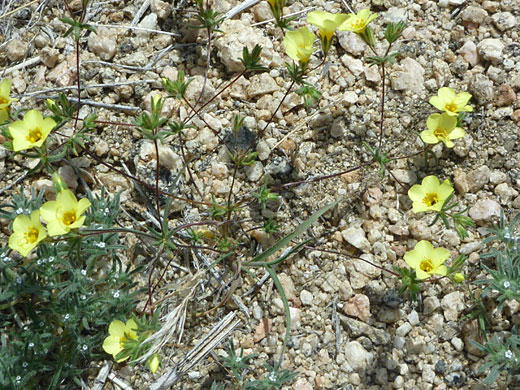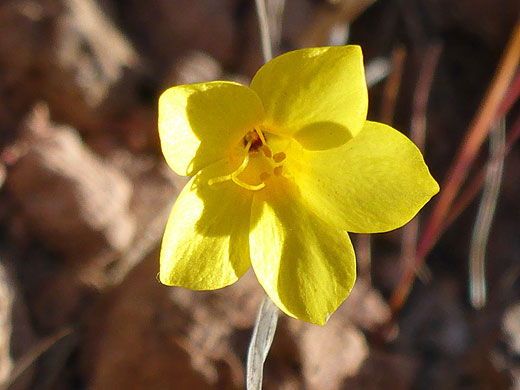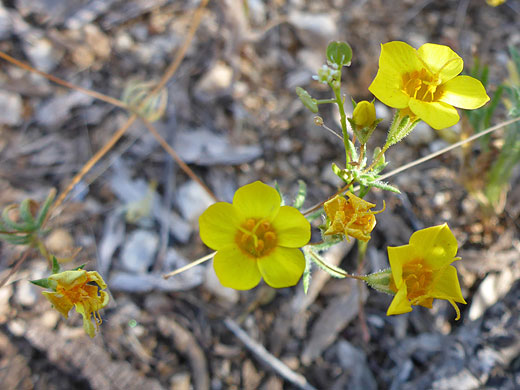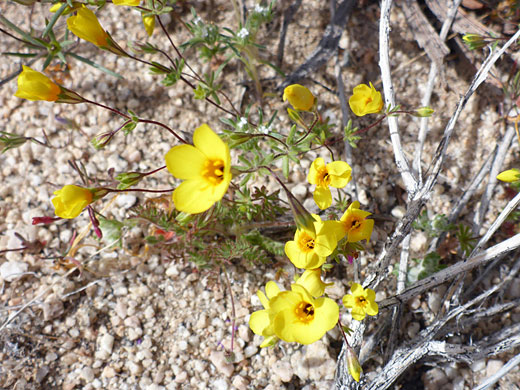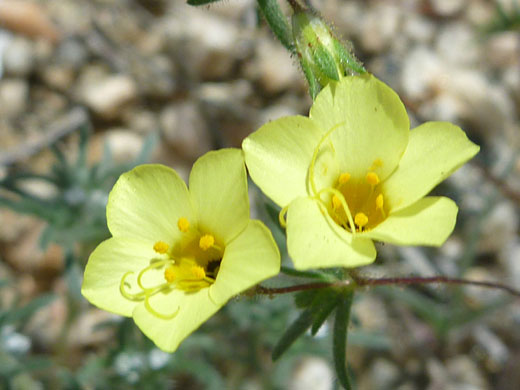Leptosiphon Aureus, Golden Desert-Trumpets
Plants > Wildflowers > Polemoniaceae > Leptosiphon Aureus
Common names:
Golden desert-trumpets, golden linanthus
Family:
Scientific name:
Leptosiphon aureus
Synonym:
Linanthus aureus
Main flower color:
Range:
From south California, eastwards to southwest New Mexico
Height:
Up to 6 inches
Habitat:
Woodland, hillsides, desert plains; up to 6,000 feet
Leaves:
Opposite, divided into narrow, linear lobes about a quarter of an inch long
Season:
March to June
Leptosiphon aureus is inconspicuous when not in bloom as the spindly stems are short and low-growing, while the leaves are small, and well separated. The flowers though are relatively large, bright and easily noticeable. They are funnel-shaped, about half an inch in diameter; a tubular corolla that opens to five oblanceolate lobes, overlapping for the lower half, supported by a five-pronged calyx formed of fused sepals which are dark green at the tips, light green towards the base, and whitish in between. The flower center contains five orange-tipped stamens, affixed at the petal margins in the throat of the corolla, and three longer yellow styles. Flowers are borne singly at the tips of the branched, red stems. The lobes are wider than the height of the corolla tube.
There are two subspecies: ssp decorus has white flowers, while ssp aureus has bright yellow flowers.
There are two subspecies: ssp decorus has white flowers, while ssp aureus has bright yellow flowers.
All Contents © Copyright The American Southwest | Comments and Questions | Contribute | Site Map


